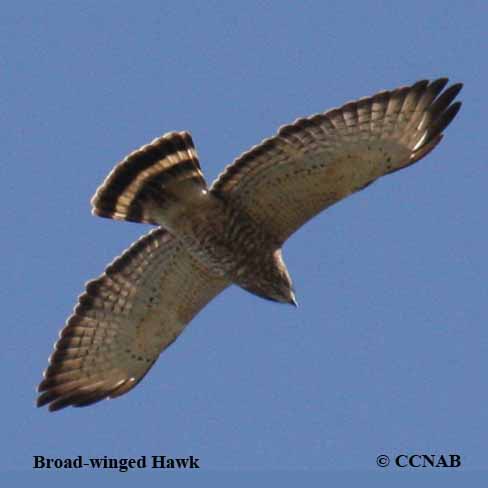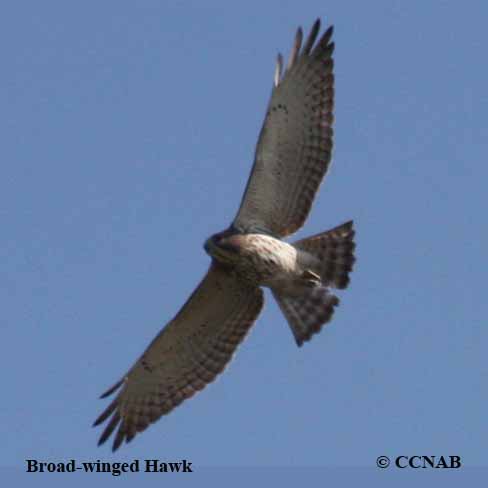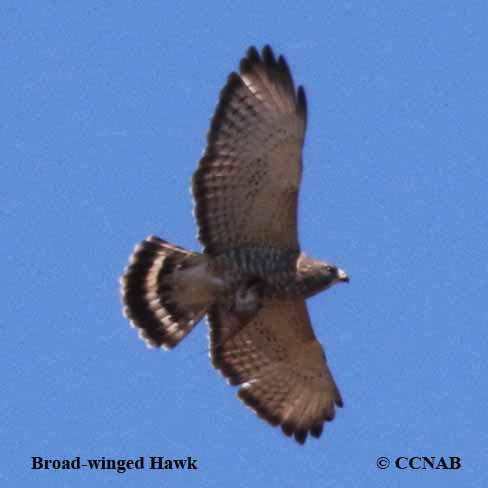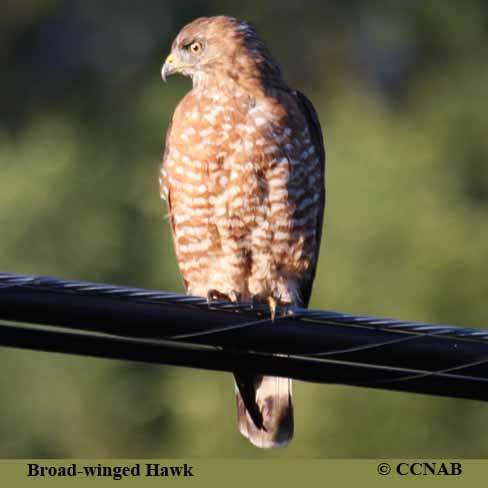Birds of Cuba Search Box
This search box can be used to find bird species using bird's english, french or latin name.
Birds of Cuba, Vagrant Visitors, Introduced Birds and Possibilities
Broad-winged Hawk
Petite Buse
Spanish: Busardo aliancho
Latin: Buteo platypterus
Information, images and range maps on over 400 birds of Cuba
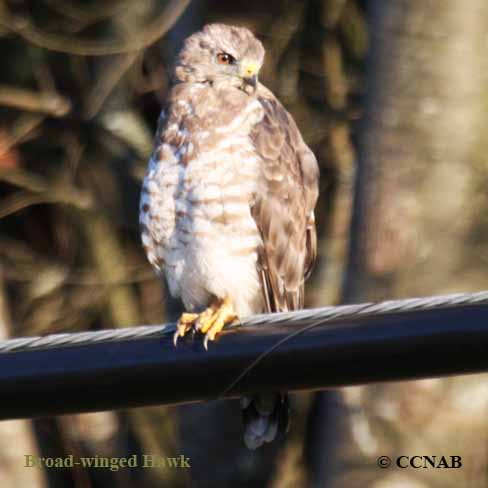
Life, Habitat & Pictures of the Broad-winged Hawk
| B L | W W | W | Family | Latin Name |
|---|---|---|---|---|
| 15" 38cm | 34" 86.4cm | 14oz 396g | Accipitridae | Buteo platypterus |
- Breeding
- Year Around
- Winter
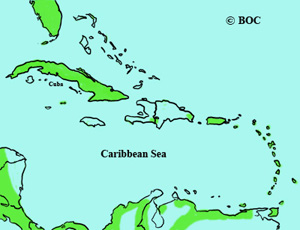
The Broad-winged Hawk is found throughout most of eastern North America's forests. It is seen from Nova Scotia, forming a finger reaching west, out into the prairies, and beyond to British Columbia, down through the central USA states, to Texas and east to Georgia. They migrate into South America every fall for the winter months. It has been a vagrant in Cuba.
